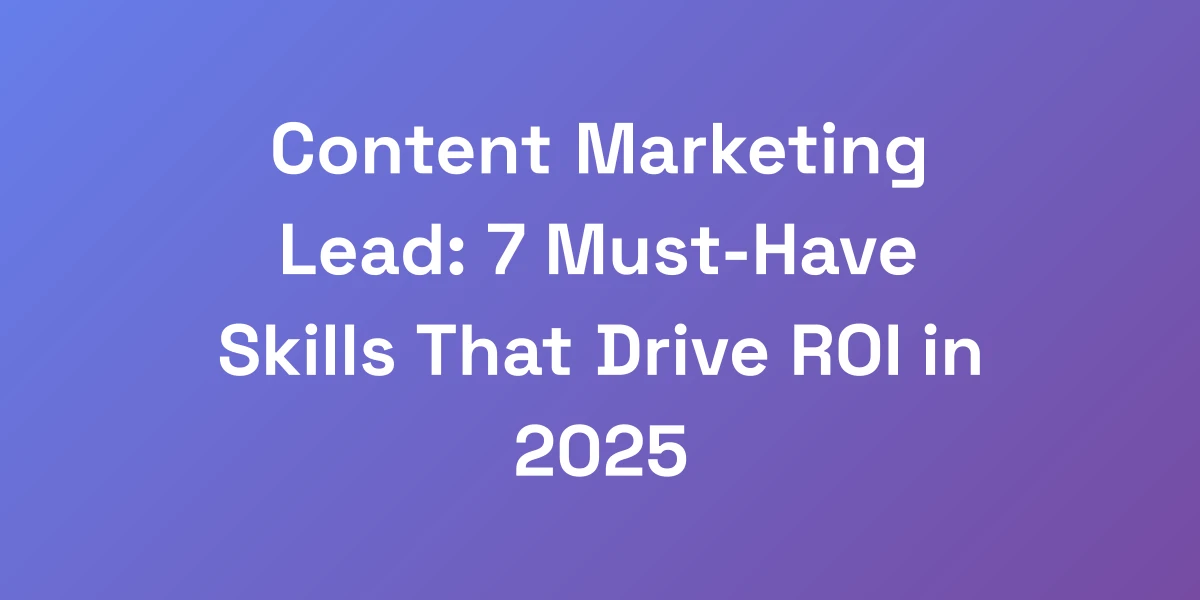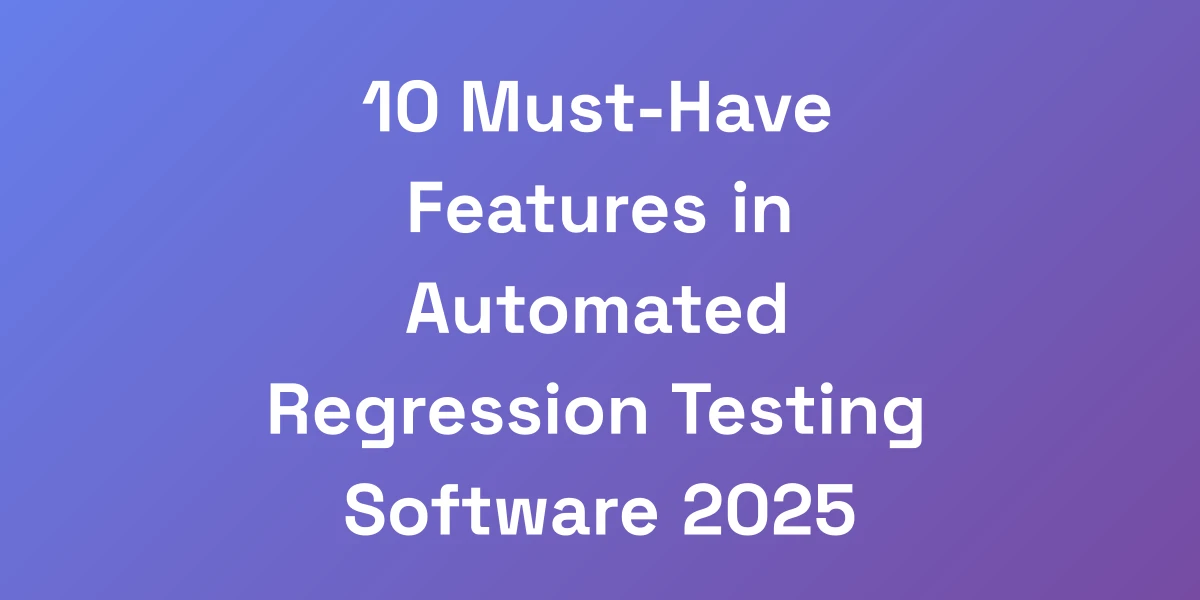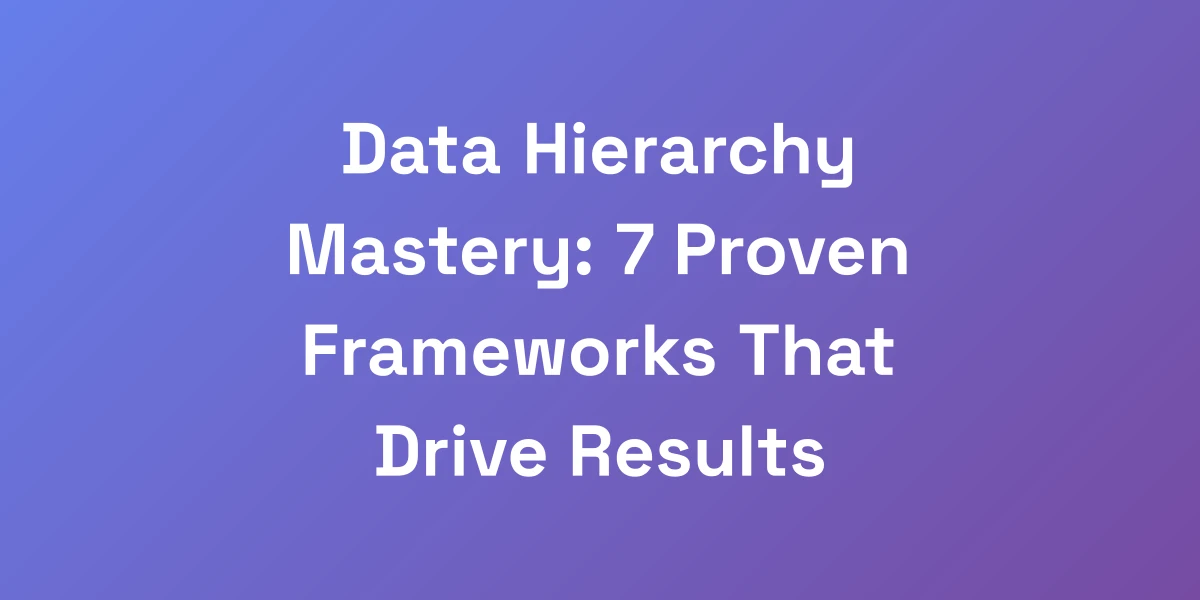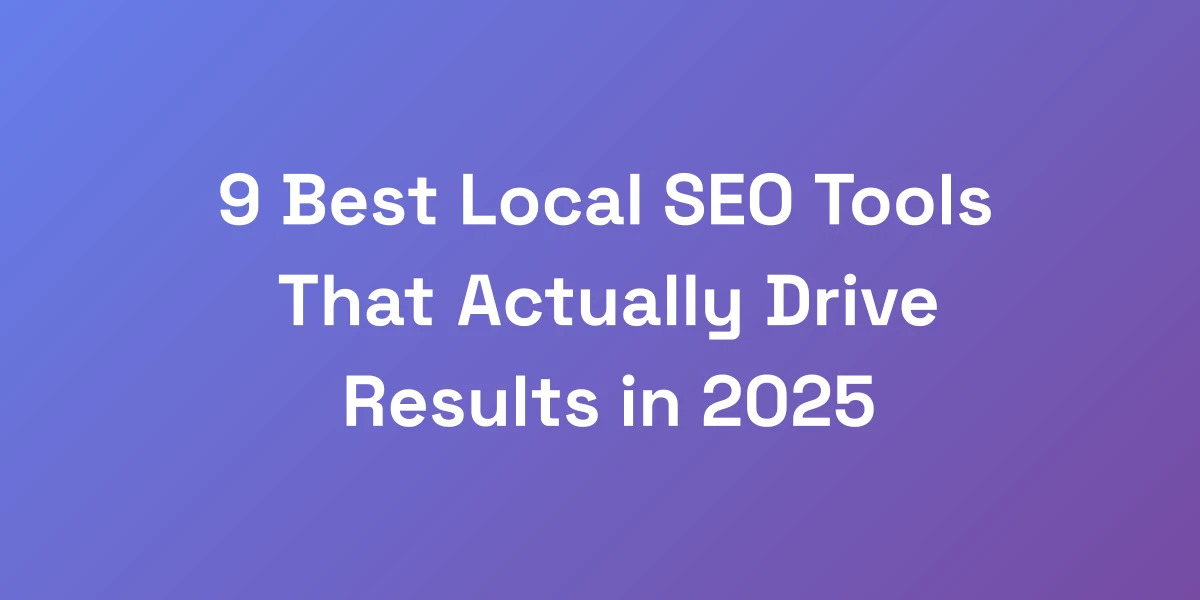Agency Rank Tracker: 7 Must-Have Features That Drive Client Results
Mar 18, 2025 | By [email protected]
Introduction
Running an agency isn’t for the faint-hearted. We’re juggling multiple clients, each with their own unique demands and expectations. Imagine trying to track thousands of keywords across various industries without the right tools. It’s a nightmare, right?
Most agencies rely on rank tracking tools that simply can’t keep up with the scale and complexity of our work. The margin for error is zero, and the pressure to deliver stellar results is immense. We’ve all been there—spending countless hours on agency reports 2023, only to realize the tools we’re using are holding us back.
But what if there was a way to streamline this chaos? A solution designed specifically for agencies, enabling us to deliver exceptional results without burning out. Intrigued? Let’s dive into the seven must-have features every agency rank tracker needs to drive client success.
Why Traditional Rank Trackers Fail Agency Needs
Let me be direct: most rank tracking tools weren’t built for agencies. They were built for in-house teams tracking 50-100 keywords. But here’s the reality – as an agency, you’re juggling multiple clients, thousands of keywords, and demanding stakeholders who want answers yesterday.
The stakes are higher, the complexity is greater, and the margin for error is zero. I’ve personally wasted hundreds of thousands on tools that couldn’t scale. Here’s why traditional solutions fall short and what you actually need to best rank trackers to drive client success.
The Scale Problem: When Your Tool Can’t Keep Up
Agencies thrive on scale. Managing multiple clients means tracking thousands of keywords simultaneously. Traditional rank tracking tools falter here, often slowing down or crashing under the weight.
Imagine trying to track 10,000 keywords with a tool designed for 500. It’s not just inefficient—it’s impossible. You end up prioritizing some clients over others, leading to inconsistencies and dissatisfied customers.
- Solution: Choose a tool that can handle high volumes without compromising performance. Look for scalability features that grow with your agency.
Accuracy Issues That Cost Clients
Accuracy is king. If your rank tracking tools aren’t precise, you’re not providing the right insights, and your clients will notice. Inaccurate data can lead to misguided strategies, wasted budgets, and ultimately, lost trust.
We need tools that provide reliable, real-time data. Without this, we’re essentially flying blind, making decisions based on flawed information.
- Solution: Opt for tools with high accuracy rates and regular updates to keep up with Google’s algorithms.
The Hidden Costs of Manual Reporting
Manual reporting is not just time-consuming—it’s draining. Every hour spent on copying and pasting data is an hour not spent on strategy or client acquisition.
- Solution: Implement automated reporting features to save time and reduce errors.
Why Single-User Access Kills Agency Efficiency
In an agency, teamwork is essential. Single-user access limits collaboration, making it difficult to share insights and coordinate efforts across teams.
When only one person can access the data, it creates bottlenecks and slows down the entire workflow. Agencies need tools that support multiple users seamlessly.
- Solution: Choose tools that offer multi-user access with different permission levels to enhance collaboration.
The White Label Limitation
White labeling isn’t just a nice-to-have—it’s a necessity. Deliverables need to look professional and align with your brand to command premium prices.
Basic logo slapping won’t cut it. You need sophisticated branding tools that maintain consistency across all client touchpoints.
- Solution: Invest in rank trackers with advanced white label capabilities that allow full customization.
Essential Feature #1: Real-Time Multi-Client Dashboard
Stop drowning in spreadsheets and scattered data. The game-changer for agencies is a unified command center that gives you instant visibility across all clients. I’m talking about real-time, segmented, actionable data that lets you spot opportunities and fires before your clients do. When I scaled my agency to 8-figures, this single feature saved us 30+ hours per week in management time. Here’s what a proper agency dashboard must deliver to justify its existence in your tech stack.
Client Segmentation That Makes Sense
Managing multiple clients means each one has unique needs and KPIs. A multi-client dashboard should allow you to segment data intuitively.
- Actionable Tip: Use filters and tags to categorize clients by industry, campaign type, or performance metrics.
Custom Alert Thresholds by Client
Different clients have different thresholds for what constitutes good or bad performance. Custom alerts ensure you’re notified about critical changes specific to each client.
- Actionable Tip: Set up personalized alert thresholds for each client to stay proactive, not reactive.
Performance Comparison Tools
Comparing performance across clients or against competitors can uncover valuable insights. Performance comparison tools make this effortless.
- Actionable Tip: Regularly benchmark your clients’ performance against industry standards and key competitors.
Automated Insight Generation
Data is only as good as the insights you can extract from it. Automated insights help you quickly identify trends, opportunities, and areas needing attention.
- Actionable Tip: Leverage AI-driven insights to provide strategic recommendations without the manual legwork.
Mobile-First Design for On-the-Go Access
Agencies are fast-paced, and sometimes you need to check in on metrics while on the move. A mobile-first dashboard ensures you have access wherever you are.
- Actionable Tip: Ensure your dashboard is fully responsive and offers a seamless mobile experience.
Essential Feature #2: Advanced White Label Capabilities
Here’s the brutal truth about agency profits: your deliverables need to look like a million bucks, even when you’re charging five figures. White labeling isn’t a luxury – it’s a necessity for commanding premium prices. But basic logo slapping won’t cut it. Modern agencies need sophisticated branding tools that maintain consistency across all client touchpoints. Let me show you how to leverage white label features to 10x your perceived value.
Custom Domain Integration
Your reports should reinforce your brand, not the rank tracker’s. Custom domain integration ensures all client interactions stay within your branded ecosystem.
- Actionable Tip: Use your own domain for client portals and report sharing to maintain brand consistency.
Branded Report Templates
Each report should reflect your agency’s unique style and professionalism. Branded templates make every report a reflection of your brand’s quality.
- Actionable Tip: Design customized templates that highlight your agency’s branding elements, such as logos, colors, and fonts.
Client Portal Customization
Provide clients with a seamless experience by customizing their portal. Tailored portals improve client satisfaction and trust.
- Actionable Tip: Allow customization of client dashboards to showcase the metrics that matter most to each client.
Multi-Brand Management
Managing multiple brands under one roof requires flexibility. Multi-brand management features let agencies handle various client brands effortlessly.
- Actionable Tip: Use a tool that supports managing multiple client brands from a single account without mixing data.
API Access for Custom Solutions
Sometimes, the out-of-the-box features just aren’t enough. API access allows you to build custom integrations and solutions tailored to your agency’s specific needs.
- Actionable Tip: Utilize rank tracker API use cases for SEO to integrate your rank tracker with other tools in your tech stack for a more cohesive workflow.
Essential Feature #3: Automated Client Reporting
Want to know what kills agency profitability faster than anything else? Manual reporting. Every hour spent copying and pasting data is an hour you’re not spending on strategy or sales. The right rank tracker automates 90% of your reporting workflow, turning what used to be a 2-day process into a 15-minute task. Here’s the reporting automation framework that transformed our agency’s efficiency.
Scheduled Report Generation
Consistency is key. Scheduled reports ensure your clients receive regular updates without any manual intervention.
- Actionable Tip: Set up daily, weekly, or monthly report schedules based on client preferences and campaign needs.
Multi-Format Export Options
Clients have different preferences for how they receive data. Offering multiple export formats makes your reports more accessible and useful.
- Actionable Tip: Provide reports in PDF, Excel, and interactive online formats to cater to various client needs.
Custom Report Builders
Every client is unique, and so should their reports be. Custom report builders allow you to create tailored reports that highlight what matters most to each client.
- Actionable Tip: Use customizable templates to create reports that align with each client’s specific goals and KPIs.
Automated Insights and Analysis
Raw data is overwhelming. Automated insights distill this data into actionable intelligence, making it easier to present clear value to your clients.
- Actionable Tip: Implement tools that automatically generate insights and recommendations based on the data collected.
Client-Specific KPI Tracking
Not all clients care about the same metrics. Tracking client-specific KPIs ensures you’re focusing on what truly matters to each individual client.
- Actionable Tip: Customize your reporting dashboard to highlight the KPIs that align with each client’s objectives.
Essential Feature #4: Comprehensive Keyword Management
Keywords are the foundation of SEO. Managing them effectively is crucial for driving results for your clients. A robust rank tracker should offer comprehensive keyword management capabilities to ensure no opportunity is missed.
Keyword Categorization and Grouping
Organizing keywords into categories and groups helps in better analysis and strategy formulation.
- Actionable Tip: Use keyword grouping features to categorize keywords by intent, competition, or client goals.
Bulk Keyword Import and Export
Efficiency is vital when dealing with thousands of keywords. Bulk import and export features save time and reduce errors.
- Actionable Tip: Leverage bulk import/export to quickly add or update large keyword lists without manual entry.
Keyword Difficulty and Opportunity Analysis
Understanding the difficulty and potential of keywords allows you to prioritize efforts effectively.
- Actionable Tip: Use built-in keyword difficulty metrics to identify high-impact opportunities for your clients.
Seasonal Keyword Tracking
Seasonality can significantly impact keyword performance. Tracking seasonal trends helps in timely strategy adjustments.
- Actionable Tip: Monitor seasonal trends and adjust keyword strategies to capitalize on peak times.
Competitor Keyword Analysis
Knowing what your competitors are targeting provides a strategic advantage. Competitor keyword analysis helps in benchmarking and uncovering gaps.
- Actionable Tip: Regularly analyze competitor keywords to identify new opportunities and refine your SEO strategies.
Essential Feature #5: In-Depth Competitor Analysis
Understanding your competition is crucial for staying ahead. A top-tier agency rank tracking should offer in-depth competitor analysis to provide actionable insights.
Competitor Keyword Overlap
Identify which keywords you and your competitors are targeting to find areas where you can outperform them.
- Actionable Tip: Use keyword overlap reports to focus on keywords where you can gain a competitive edge.
Backlink Analysis
Backlinks are a key SEO factor. Analyzing competitors’ backlink profiles can reveal valuable link-building opportunities.
- Actionable Tip: Track competitor backlinks to find potential sources for your own link-building campaigns.
Content Gap Analysis
Identify the topics and keywords your competitors are ranking for that you’re not. This helps in expanding your content strategy effectively.
- Actionable Tip: Create content that fills the gaps identified in your competitor’s strategies to attract more traffic.
SERP Feature Tracking
Stay aware of the SERP features your competitors are leveraging. This allows you to strategize how to outperform them in search results.
- Actionable Tip: Monitor SERP feature update 2023 and master Google SERP features 2024 to adapt your content accordingly.
Performance Benchmarking
Benchmark your clients’ performance against their top competitors to provide clear insights and strategic recommendations.
- Actionable Tip: Use benchmarking tools to set realistic goals and measure progress against industry leaders.
Essential Feature #6: Multi-Platform Integration
Agencies rely on a variety of tools to manage different aspects of their business. A agency rank tracker that seamlessly integrates with these platforms can significantly enhance your workflow.
Integration with Google Analytics and Search Console
Connecting your rank tracker with Google Analytics and Search Console ensures you have a comprehensive view of your SEO performance.
- Actionable Tip: Sync your rank tracker with Google Analytics and Search Console for unified data analysis.
CRM and Project Management Tool Integration
Integrating with CRM and project management tools like Salesforce or Asana streamlines your processes and keeps everything in one place.
- Actionable Tip: Automate data flow between your rank tracker and project management tools to enhance team collaboration.
API Access for Custom Integrations
Flexibility is key. API access allows you to build custom integrations that fit your agency’s unique workflow.
- Actionable Tip: Utilize rank tracker API use cases for SEO to connect your rank tracker with other bespoke tools you use in your agency.
Integration with Content Management Systems (CMS)
Seamless integration with CMS platforms like WordPress or Drupal allows for better content strategy alignment with SEO efforts.
- Actionable Tip: Connect your rank tracker with your CMS to streamline content optimization workflows.
Social Media Integration
SEO doesn’t exist in a vacuum. Integrating social media metrics provides a fuller picture of your digital marketing efforts.
- Actionable Tip: Track social media performance alongside SEO metrics to identify cross-channel opportunities.
Essential Feature #7: Detailed Reporting and Visualization
Data without clear visualization is useless. Detailed reporting and visualization tools help agencies present data in a way that’s easy to understand and act upon.
Customizable Dashboards
Every client has different needs. Customizable dashboards ensure each client sees the metrics that matter most to them.
- Actionable Tip: Tailor dashboards to highlight key performance indicators specific to each client’s goals.
Interactive Data Visualization
Interactive charts and graphs make data more engaging and easier to interpret, helping clients grasp complex information quickly.
- Actionable Tip: Use interactive visualizations to present data in a dynamic and engaging manner.
Automated Report Summaries
Provide clients with concise summaries that highlight the most important data points and actionable insights.
- Actionable Tip: Implement automated summaries that capture key achievements and areas for improvement.
Historical Data Tracking
Tracking historical data allows you to show progress over time, demonstrating the value your agency is providing.
- Actionable Tip: Use historical trends to set benchmarks and measure long-term success.
Exportable Reports for Client Meetings
Providing exportable, professional-looking reports ensures you can present your findings effectively during client meetings.
- Actionable Tip: Choose tools that allow easy export of reports in client-friendly formats like PDF or PowerPoint.
Conclusion
Choosing the right rank tracker is a game-changer for any agency aiming to deliver exceptional results. We’ve explored the seven must-have features that can transform your workflow, enhance client satisfaction, and drive significant growth based on agency management benchmarks for 2024.
From real-time multi-client dashboards to advanced white label capabilities, each feature plays a crucial role in optimizing your agency’s performance. Remember, the right tools not only save time but also empower you to focus on what truly matters: strategic growth and client success.
Ready to elevate your agency’s SEO game? Invest in a rank tracker that meets these essential criteria and watch your client results soar. Don’t settle for less—your agency deserves the Advanced Web Ranking to dominate the competitive landscape.
What feature do you find most critical in a rank tracker? Share your thoughts and experiences below—we’d love to hear from you!




